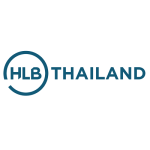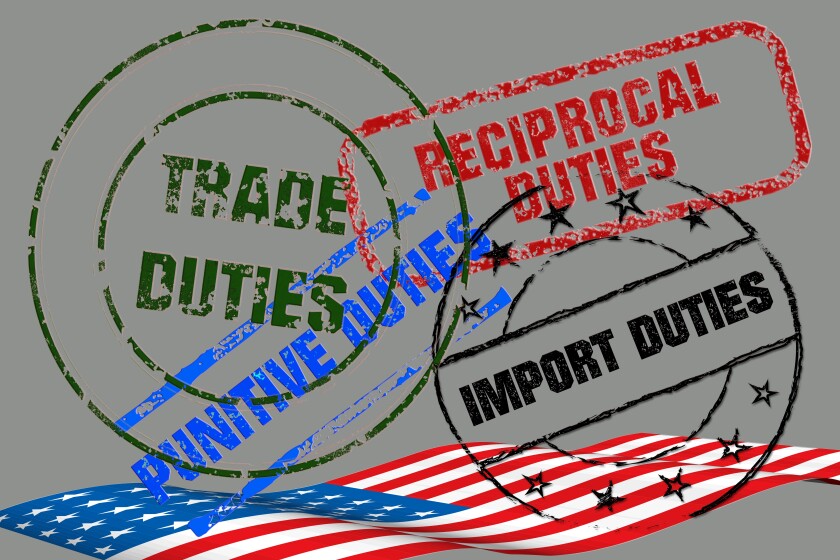Historically, customs tariffs and transfer pricing (TP) have been treated as distinct areas of tax and trade policies. Tariffs were seen as border-related costs, while TP focused on aligning intragroup pricing with value creation across jurisdictions. However, this separation has become increasingly blurred over the years.
In response to evolving tariff landscapes, multinational enterprise (MNE) groups are now being called upon to navigate new business models, altered functional profiles, and the economic substance of cross-border intercompany transactions. There are also increasingly complex questions around tested party selection, benchmarking, and documentation. The effects are especially pronounced in countries such as Thailand that serve as regional manufacturing and distribution hubs.
New tariffs and their global consequences
In April 2025, the US took an increasingly assertive stance on trade, particularly concerning China, Canada, Mexico, Brazil, India, and the EU. A new wave of tariffs was introduced, targeting a wide range of Chinese, Canadian, Brazilian, and Mexican exports, including electric vehicles (EVs), semiconductors, batteries, crude oil, energy products, aircraft parts, vehicles, electrical machinery, chemicals, and agricultural and farm products.
Intended to promote domestic manufacturing and address perceived imbalances, these tariffs have had wide-ranging consequences. For multinational groups that previously relied on Chinese-based production and US-based distribution, the sudden increase in tariffs has forced a rapid reconfiguration of supply chains and pricing strategies. Many MNE groups are now seeking to shift their production bases away from China. India, Thailand, and many other Association of Southeast Asian Nations countries have emerged as alternative hubs due to their infrastructure, cost advantages, and preferential trade agreements.
Thailand’s evolving role in global supply chains
Thailand continues to serve as a key manufacturing and export hub for industries that are highly sensitive to tariff changes, such as EVs, electronics, and textiles. In many cases, Thai subsidiaries of MNE groups have historically operated as contract manufacturers under limited-risk models, earning a fixed markup based on their functional profile. However, as tariffs increase input costs, group entities in the US are experiencing reductions in profit margins. This pressure may be pushed back on to Thai manufacturers, creating tension between the commercial needs of the group and TP policies.
This dynamic is especially problematic where a bilateral advance pricing agreement (BAPA) is in force, as illustrated in the following case study.
Case study
Consider a multinational EV group with a manufacturing subsidiary in Thailand operating as a contract manufacturer. Under a BAPA between the Thai Revenue Department (TRD) and the US Internal Revenue Service, the Thai entity was compensated based on a cost-plus markup of 12% for its manufacturing services. This APA was intended to provide five years of pricing certainty and was structured on the assumption that the Thai entity would bear minimal risk and operate on a routine basis, while the US distribution entity would assume market and strategic risks. The US entity, in turn, earned an average net profit margin of 10% on vehicle sales to US consumers.
However, following recent tariff changes that imposed steep duties on components originating from China and foreign-produced EVs, the group faced a significant increase in product costs. Although the Thai entity sourced some components locally, many high-value inputs still originated from China or other jurisdictions affected by US tariffs. As a result, the product cost of Thai-produced EVs entering the US market rose sharply, reducing the margins of the US distribution entity from 10% to 7%.
To mitigate this impact, the US entity requested a revision of the TP arrangement, asking the Thai contract manufacturer to accept a reduced markup of 8% instead of 12%, thereby shifting a portion of the cost burden to Thailand. From a commercial standpoint, this internal reallocation would help to preserve the US entity’s profitability and avoid losses under increasing cost pressure.
However, this request raises serious issues. First, it conflicted with the terms of the existing BAPA, which locked in the Thai entity’s return at 12% to reflect its functional profile as a contract manufacturer with limited risk exposure. Any unilateral deviation from that pricing would not only risk violating the APA but could also lead to double taxation if the TRD continued to enforce the agreed markup. Second, the reduction in the Thai entity’s markup would effectively recharacterise its function and risk profile, potentially undermining the basis of the APA altogether.
This situation illustrates how tariff shocks can destabilise even well-structured TP arrangements, especially where existing APAs rely on assumptions that are no longer realistic in a post-tariff shock environment. In this case, neither tax authority had anticipated a shift in trade policy that would distort the economic assumptions underlying the pricing model. The APA might not have included a clause to address external events such as tariffs or supply chain shocks, leaving both entities locked into a pricing structure that no longer reflected economic reality.
From a policy standpoint, the case highlights a broader risk: that rigid APAs may struggle to withstand real-world disruptions. Taxpayers and revenue authorities alike must now consider whether, and how, to build flexibility into future agreements, such as tariff-adjustment clauses, renegotiation triggers, or annual reviews tied to external economic indicators.
Tested party selection and benchmarking models
The post-tariff shock environment has forced many MNE groups to revisit their existing TP assumptions, particularly around tested party selection and the reliability of benchmarking analyses.
Traditionally, entities in jurisdictions such as Thailand have been selected as the tested party based on the premise that they are less complex, lower risk, and primarily routine in function. However, when a Thai manufacturer starts to absorb operational risks due to shifting responsibilities, such as managing tariff-exposed supply chains or supporting export logistics for the US market, the underlying rationale for its tested party status begins to weaken. The functional profile becomes more complex, making the Thai entity less suitable as the tested party under the comparability criteria.
Benchmarking studies would also become more difficult to support, even with the TRD’s preference for local comparables. While the TRD generally requires the use of Thai-domiciled private companies as comparables, recent tariff-related disruptions have created distortions in profitability across sectors. Some local manufacturers are more exposed to tariff-induced cost increases than others, leading to inconsistencies in margins within the same industry set. These shifts challenge the reliability of historical benchmarking sets and may require more frequent updates of comparables.
The way forward
The shifting landscape of global tariffs requires MNE groups to reassess their functional analyses to reflect any expanded roles or risks taken on by Thai entities, such as logistics or export compliance. Static models that do not anticipate or accommodate external shocks, such as the 2025 US tariffs, will likely prove inadequate.
Tested party selection and benchmarking strategies must also be revisited, ensuring that benchmarking studies are based on the most current financial information and that any necessary economic adjustments are well documented.
Existing APAs should be stress-tested for resilience against trade disruptions, with proactive engagement if current terms no longer reflect economic reality.
Lastly, comprehensive contemporaneous documentation beyond TP reports – such as internal memos, management communications, and operational data supporting why specific pricing decisions were made in response to tariff-induced cost increases or margin pressure – are also essential to support pricing decisions.













